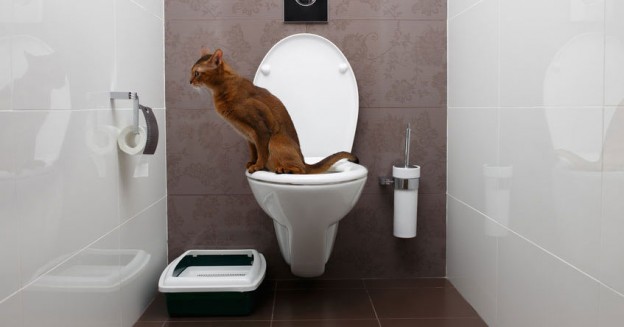Dangers of Disposing Cat Poop in Your Toilet - Precautionary Measures
Dangers of Disposing Cat Poop in Your Toilet - Precautionary Measures
Blog Article
How do you actually feel about How to Dispose of Cat Poop and Litter Without Plastic Bags?

Introduction
As pet cat owners, it's essential to be mindful of how we get rid of our feline close friends' waste. While it may appear hassle-free to purge cat poop down the toilet, this method can have destructive consequences for both the setting and human health and wellness.
Environmental Impact
Purging pet cat poop presents damaging microorganisms and bloodsuckers into the water supply, positioning a significant risk to aquatic communities. These impurities can adversely influence aquatic life and compromise water high quality.
Health Risks
In addition to environmental issues, flushing feline waste can additionally position health and wellness threats to people. Feline feces might contain Toxoplasma gondii, a parasite that can create toxoplasmosis-- a potentially serious disease, especially for pregnant women and individuals with weakened immune systems.
Alternatives to Flushing
Fortunately, there are much safer and extra liable methods to dispose of feline poop. Take into consideration the complying with options:
1. Scoop and Dispose in Trash
One of the most common method of dealing with pet cat poop is to scoop it into an eco-friendly bag and toss it in the trash. Be sure to utilize a committed trash scoop and dispose of the waste quickly.
2. Usage Biodegradable Litter
Select naturally degradable pet cat trash made from materials such as corn or wheat. These trashes are environmentally friendly and can be securely thrown away in the trash.
3. Bury in the Yard
If you have a yard, consider hiding pet cat waste in a marked location away from vegetable yards and water resources. Be sure to dig deep adequate to avoid contamination of groundwater.
4. Set Up a Pet Waste Disposal System
Purchase a family pet waste disposal system specifically developed for pet cat waste. These systems utilize enzymes to break down the waste, reducing odor and ecological impact.
Conclusion
Liable family pet ownership expands beyond supplying food and shelter-- it additionally includes appropriate waste monitoring. By avoiding flushing cat poop down the bathroom and selecting different disposal methods, we can lessen our environmental footprint and safeguard human wellness.
Why Can’t I Flush Cat Poop?
It Spreads a Parasite
Cats are frequently infected with a parasite called toxoplasma gondii. The parasite causes an infection called toxoplasmosis. It is usually harmless to cats. The parasite only uses cat poop as a host for its eggs. Otherwise, the cat’s immune system usually keeps the infection at low enough levels to maintain its own health. But it does not stop the develop of eggs. These eggs are tiny and surprisingly tough. They may survive for a year before they begin to grow. But that’s the problem.
Our wastewater system is not designed to deal with toxoplasmosis eggs. Instead, most eggs will flush from your toilet into sewers and wastewater management plants. After the sewage is treated for many other harmful things in it, it is typically released into local rivers, lakes, or oceans. Here, the toxoplasmosis eggs can find new hosts, including starfish, crabs, otters, and many other wildlife. For many, this is a significant risk to their health. Toxoplasmosis can also end up infecting water sources that are important for agriculture, which means our deer, pigs, and sheep can get infected too.
Is There Risk to Humans?
There can be a risk to human life from flushing cat poop down the toilet. If you do so, the parasites from your cat’s poop can end up in shellfish, game animals, or livestock. If this meat is then served raw or undercooked, the people who eat it can get sick.
In fact, according to the CDC, 40 million people in the United States are infected with toxoplasma gondii. They get it from exposure to infected seafood, or from some kind of cat poop contamination, like drinking from a stream that is contaminated or touching anything that has come into contact with cat poop. That includes just cleaning a cat litter box.
Most people who get infected with these parasites will not develop any symptoms. However, for pregnant women or for those with compromised immune systems, the parasite can cause severe health problems.
How to Handle Cat Poop
The best way to handle cat poop is actually to clean the box more often. The eggs that the parasite sheds will not become active until one to five days after the cat poops. That means that if you clean daily, you’re much less likely to come into direct contact with infectious eggs.
That said, always dispose of cat poop in the garbage and not down the toilet. Wash your hands before and after you clean the litter box, and bring the bag of poop right outside to your garbage bins.
https://trenchlesssolutionsusa.com/why-cant-i-flush-cat-poop/

We had been guided to that editorial about Can You Flush Cat Poop Down The Toilet? from someone on a different web address. I beg you take a moment to promote this blog posting if you liked it. I praise you for your time. Visit us again soon.
Call Today Report this page